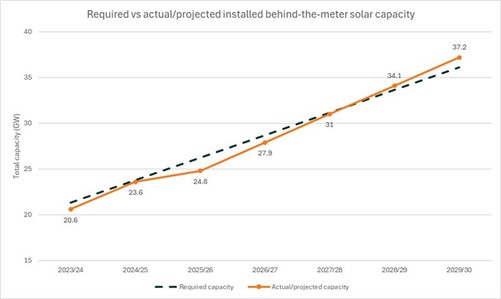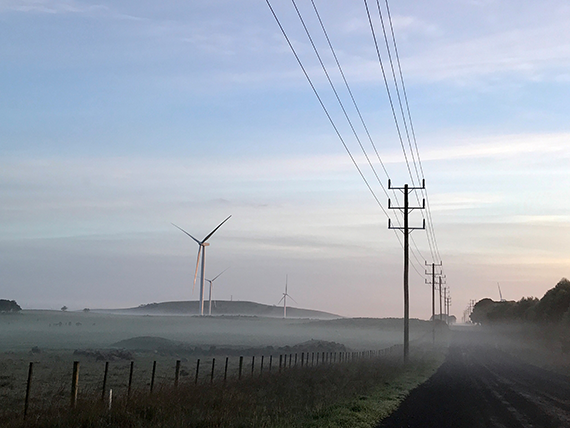Rooftop solar generated power for more than 4.2 million homes and small businesses - delivered 12.8 per cent of Australia’s electricity in first half of 2025
Australia’s rooftops continue to be a clean-energy powerhouse, with new data from the Clean Energy Council released today showing rooftop solar provided 12.8 per cent of the nation’s electricity generation in the first half of 2025, with Australia on track to meet its 2030 rooftop solar targets.
The Clean Energy Council’s, bi-annual Rooftop Solar and Storage Report (Jan–Jun 2025) reveals that by June this year, Australians had installed a total of 26.8 GW of rooftop solar capacity across 4.2 million homes and small businesses. On current trends, this year-on-year installation rate means that Australia will likely exceed its 2030 target for rooftop solar.
The Australian Energy Market Operator’s (AEMO) Integrated System Plan, which underpins the national 82 per cent renewable energy target, expects that by 2030 Australia will have approximately 36 GW of rooftop solar installed throughout the National Electricity Market.
The amount of rooftop electricity currently installed represents nearly three-quarters of the capacity needed to meet the Australian Energy Market Operator’s 2030 target of 36 GW. Based on current trends, the Clean Energy Council expects Australia to have installed 37.2 GW of rooftop solar by June 2030, beating projections by 3.3 per cent (Figure 1).
In the first half of 2025 alone, the report found 115,584 rooftop systems were installed nationwide, adding 1.1 GW of capacity, with rooftop solar contributing 15,463 GWh to the national energy mix.
Queensland added the most rooftop solar in the first half of 2025, with 326 MW of installed capacity, followed by New South Wales (321 MW) and Victoria (230 MW). Overall New South Wales retains the highest overall rooftop solar capacity in the nation at 7.5 GW, with Queensland close behind at 7.2 GW – leading the nation with more than 1.1 million total installations - while Victoria ranks third with 5.4 GW.
Just as Australians have long understood the value of solar in lowering household energy bills, we are now seeing a surge in battery adoption, which allows households to store their own clean energy and maximise savings.Con Hristodoulidis Clean Energy Council General Manager - Distributed Energy
Australians are also embracing home batteries at record pace, with 85,000 battery units sold in the first half of 2025 – a 191 per cent increase on the same period last year. Cumulatively, 271,000 home batteries have now been installed nationwide, nearly double the total from 12 months ago. Installing rooftop solar can save households up to $1500 per year on energy bills, this almost doubles if you add a battery, with further savings available by joining a virtual power plant.
Con Hristodoulidis, General Manager, Distributed Energy at the Clean Energy Council, said the figures highlight the pivotal role of rooftop solar and batteries in keeping Australia’s energy transition on track.
“Australian consumers and small businesses are delivering the transition at breathtaking speed, turning suburban roofs into one of the biggest power stations in the country,” Mr Hristodoulidis said.
“Just as Australians have long understood the value of solar in lowering household energy bills, we are now seeing a surge in battery adoption, which allows households to store their own clean energy and maximise savings,” he said.
Government rebates such as the Federal Cheaper Home Batteries Program and the WA Residential Home Battery Scheme, have helped spur demand ahead of their July 1 start dates. The Clean Energy Council is now encouraging governments to expand these programs to renters and social housing tenants.
“Nearly a third of all Australian households are renters. To make sure everyone benefits, governments can further expand schemes to incentivise landlords and support social housing tenants, so all Australians can lower their bills,” he said.
Figure 1:

ENDS
For more information or to arrange an interview, please contact:
Liam Straughan
Clean Energy Council Media Officer
+61 409 470 683





